Results 7,461 to 7,470 of 12096
Thread: Anandtech News
-
10-27-17, 06:51 AM #7461
Anandtech: ADATA Launches XPG SX6000 SSDs: 3D TLC, M.2, 512GB for $145
ADATA has launched its new 3D TLC-based SSD, the XPG SX6000. The new drive is among the first in the industry to use Realtek’s RTS5760 controller. The manufacturer positions the XPG SX6000 SSD as an entry-level enthusiast-class PCIe x2 solution that will be affordable but will offer higher performance than the drives featuring the SATA interface.
The market of SSD controllers (unlike the market of the drives) is not very crowded, but it is still very hard to enter. Many SSD suppliers these days either use proven solutions from well-known controller designs or simply tweak turnkey designs (from Phison, Silicon Motion, etc.). Realtek announced its first generation of SSD controllers in mid-2016, but so far, no one has adopted these ICs. SSD vendors need to test how well they work with the memory they have, and since the industry is in transition to 3D NAND, sometimes they just prefer to go with proven controllers. Being one of the largest independent makers of drives, ADATA is usually among the first to adopt the latest types of memory as well as experiment with new controllers. Earlier this year the company released a lineup of SSDs featuring controllers from Maxiotek and this month it is releasing the first drives based on Realtek’s RTS5760.
ADATA has released three families of 3D NAND-based XPG-branded M.2 drives over the past several quarters: the SX7000, the SX8000 and the SX9000. The XPG SX6000 lineup complements the existing families and is aimed at the entry level of the market: it features the PCIe 3.0 x2 interface and is meant to replace SATA-based drives inside PCs for gamers with budget constraints. The interface is the limitation of the Realtek RTS5760 controller (four NAND channels, 8 CEs, PCIe 3.0 x2, NVMe 1.2, SLC caching, DRAM cache buffer support, etc.), but its performance should be enough for the particular storage devices.
ADATA’s XPG SX6000 family of drives includes 128 GB, 256 GB, 512 GB and 1 TB models. The manufacturer claims that the drives featuring 256 GB and higher capacities offer up to 1000 MB/s sequential read speed as well as up to 800 MB/s sequential write speed. As for random performance, we are dealing with SSDs capable of 100K/110K random read/write IOPS. For those who would like to ensure high performance under high loads, ADATA will ship a heatsink in the box with the drives. When it comes to endurance and reliability, ADATA rates the 1 TB version of the XPG SX6000 for 600 TBW, two million hours MTBF and covers them with a five-year warranty.
ADATA does not disclose what kind of 3D TLC NAND it uses for the XPG SX6000, but given the fact that the company is using a new controller, it would probably opt for familiar memory. That said, it is highly likely that ADATA uses Micron's 32-layer 3D TLC NAND, but that is something the company has not confirmed yet.ADATA XPG SX6000 Specifications Capacity 128 GB 256 GB 512 GB 1 TB Model Number ASX6000NP-
128GT-CASX6000NP-
256GT-CASX6000NP-
512GT-CASX6000NP-
1TT-CController Realtek RTS5760 NAND Flash 3D TLC NAND Form-Factor, Interface M.2-2280, PCIe 3.0 x2, NVMe 1.2 Sequential Read 730 MB/s 1000 MB/s Sequential Write 660 MB/s 800 MB/s Random Read IOPS 65K IOPS 100K IOPS Random Write IOPS 110K IOPS 110K IOPS Pseudo-SLC Caching Supported DRAM Buffer Yes, capacity unknown TCG Opal Encryption No Power Management Unknown Warranty 5 years MTBF 2,000,000 hours MSRP $50 $85 $145 Unknown
ADATA plans to start sales of the new XPG SX6000 drives with 128 GB, 256 GB and 512 GB capacity in the coming weeks at Amazon and Newegg. Other regions and the 1 TB model will follow. As for pricing, the entry-level model costs $50, whereas the 512 GB version is priced at $145.
Gallery: ADATA Launches XPG SX6000 SSDs: 3D TLC, Realtek RTS5760, PCIe 3.0 x2, Up to 1 GB/s





Related Reading- ADATA Launches the SU700 SSD Range: Maxiotek MK8115, 3D TLC, Up to 960 GB
- ADATA Launches XPG SX9000: 2.8 GB/s Seq. Read, Marvell Controller, Up to 1 TB of MLC
- ADATA Launches XPG SX8000: High-End M.2 NVMe SSD Featuring 3D MLC NAND
- ADATA Announces XPG Gammix S10: 3D TLC, SM2260, 1.7 GB/s Seq. Read, Radiator
- ADATA Announces The XPG SX7000 Series SSDs: Up to 1 TB, M.2, PCIe 3.0 x4
More...
-
10-27-17, 09:36 AM #7462
Anandtech: The Intel Optane SSD 900P 280GB Review
The Intel Optane SSD 900P brings 3D XPoint memory to a consumer SSD with capacities large enough for general-purpose storage use instead of just caching. The result is a drive that breaks almost every performance record and is clearly the fastest consumer SSD. The prices are steep, but far more affordable than the enterprise drive the 900p is derived from.
More...
-
10-27-17, 01:52 PM #7463
Anandtech: Intel Announces Q3 2017 Results
As another quarterly earnings period continues, Intel has announced its earnings for the third quarter of their 2017 fiscal year. Due the slowing of the PC market, Intel has begun its transition to a “Data-Centric Business” which will embrace more than just CPUs. The results have already begun to pay off, which isn’t surprising since they unofficially began this transformation before it was ever announced. At their heart, they are still a chip fab company, but with more reach on what chips the fab. Let’s dig into the results.
Revenues for the quarter were $16.1 billion, up 2% from a year ago. Gross margin was down 1% to 62.3%, but despite the lower margins, operating income was up 15% for the quarter to $5.1 billion. Net income was $4.5 billion, which was up 34% year-over-year. This resulted in earnings per share of $0.94, up 36%.
The new “Data-Centric Business” happens to include everything Intel does, outside of the Client Computing Group (CCG), however they’ve not quite shaken the shackles of the legacy PC business quite yet. The CCG had revenues this quarter of $8.9 billion, which is flat compared to Q3 2016. That sounds like it’s not a good thing, but considering the decline of the PC market, Intel has managed to grow this business over the last several years. That’s mostly been driven by demand for their more expensive products, because the only areas where the PC market is doing ok in is gaming, and convertible devices. Operating margins for the CCG were up three points, and the flat revenues were driven by average selling price going up 7%, but unit volumes were down 7%. Operating income for the segment grew 8% though, thanks to improvements in the 14-nanometer process (read: costs continue to drop for this node). Intel has also confirmed that 10-nanometer will be shipping in low volumes by the end of 2017, but higher volume products will be available starting in 2018. Using this as a benchmark, we should expect 10-nanometer to officially launch at CES, but that’s speculation.Intel Q3 2017 Financial Results (GAAP) Q3'2017 Q2'2017 Q3'2016 Revenue $16.1B $14.8B $15.8B Operating Income $5.1B $3.8B $4.5B Net Income $4.5B $2.8B $3.4B Gross Margin 62.3% 61.6% 63.3% Client Computing Group Revenue $8.86B +7.9% -0.3% Data Center Group Revenue $4.88B +11.6% +7.4% Internet of Things Revenue $849M +17.9% +23.2% Non-Volatile Memory Solutions Group $891M +1.9% +37.3% Programmable Solutions Group $469M +6.6% +10.3% All Other Revenue $202M +40.3% -65.2%
The Data Center Group (DCG) had revenue growth of 7% to $4.9 billion, compared to the same quarter a year ago. Operating income for the DCG was $2.3 billion for the quarter, which was also up 7%. Unit volumes were up 4%, and ASP was up 2%. Intel should continue to see growth here as they transition away from the older 22-nanometer parts.
Internet of Things group had revenues go up 23% to $849 million. Intel attributes the growth to strength in industrial and video. Operating profit was $146 million, which is down 24% year-over-year, as they continue to invest in automotive, which many companies are seeing as a strong growth target.
Non-Volatile Memory Solutions Group (NVMSG) had revenues of $891 million, which is up 37% year-over-year. Intel has seen strong demand for data center SSD solutions, and demand is outpacing supply. With the launch of 3D XPoint, they’ve created some new segments, but new products don’t come for free, and this segment had an operating loss of $52 million year-over-year, although that’s $82 million better than a year ago. Intel is predicting this unit to be profitable ahead of schedule, in 2018.
The Programmable Solutions Group, which is Intel’s FPGA business, had revenues up 10% to $469 million. FPGAs have seen a number of new markets, and Intel has found a firm foothold in data center, automotive, and military. Operating profit for this segment was $113 million, which is up 45% year-over-year.
Finally, the All Other group had revenues of $202 million, which is down significantly from a year ago when it was $581 million. Intel has recently acquired Mobileye, and has reported that Mobileye’s results will be in the All Other category going forward.
Looking forward, Intel is expecting revenues around $16.3 billion for Q4, plus or minus $500 million, with gross margin around 61%, plus or minus a couple of points.
Source: Intel Investor Relations
More...
-
10-30-17, 07:34 AM #7464
Anandtech: ADATA Premier and XPG SDXC and microSDXC Cards Review
Digital cameras and camcorders employ memory cards (flash-based removable media) for storage of captured content. There are different varieties of memory cards catering to various performance levels. CompactFlash (CF) became popular in the late 90s, but, has now been overtaken by Secure Digital (SD) cards. Many computing systems (PCs as well as smartphones) also support SD cards for augmenting local storage capabilities. We recently started in-depth evaluation of the performance of various memory cards. ADATA sent over a representative bunch of their SD card portfolio for review. Read on for a look at some of their SD and microSD cards.
More...
-
10-30-17, 09:44 AM #7465
Anandtech: AOC Announces Q3279VWF Display: 31.5”, MVA, 2560×1440, FreeSync
AOC has introduced its new display that promises to combine a set of features with an affordable price of around $300. The AOC Q3279VWF uses a 31.5” MVA panel and features a 2560×1440 resolution, but also comes with FreeSync. It has a reasonable pixel density as well as multiple inputs making it widely compatible.
The AOC Q3279VWF builds upon an 8-bit (+ FRC) MVA panel with a QHD (2560×1440) resolution. The panel has rather typical specs for an entry-level display: a 250 nits brightness, a 3000:1 contrast ratio, a 5 ms GtG response time, as well as a 60 Hz maximum refresh rate. The manufacturer claims that the panel can display 1.07 billion colors due to FRC treatment and states that the display covers 98% of the sRGB color space. Like many other modern monitors from AOC, the Q3279VWF supports AMD’s FreeSync dynamic refresh rate technology to appeal to gamers. The company does not disclose the exact FreeSync’s range, specifically the lower bound, but typically the range is around 30-60 Hz on basic models. In comparison to some other models from AOC, the display does not support any special game and video upscale modes - the manufacturer sells the Q3279VWF8 in Australia, which has some of these features enable.
The monitor uses a solid stand that cannot swivel, but can enable portrait mode and supports tilting (-2/+21.5°). When it comes to connectivity, the Q3279VWF has everything covered: it features a DisplayPort 1.2, a DVI connector, a D-Sub input and an HDMI 1.4 header. AOC says that the display fully supports HDCP, but never mentions the exact version or the ports that support it. With all four types of video inputs, AOC can address a fleet of new and old PCs with the Q3279VWF monitor.
We see two opposing trends in the display industry today. On the one hand, laptops are getting smaller and 12” – 13” notebook displays are becoming mainstream (14” and 15.6” models prevail, but 17” are virtually non-existent). By contrast, average desktop monitors are getting bigger. Over the past year, AOC announced several inexpensive (sub-$200) 24” and 27” displays targeting entry-level PCs. With the Q3279VWF, the company is bringing down the price of 31.5” QHD monitors to ~$300, but is addressing a higher-end market segment with FreeSync. To a large degree, the Q3279VWF responds to demand of mainstream users for bigger displays.Specifications of AOC's Entry-Level 31.5" Display Q3279VWF Panel 31.5" MVA Native Resolution 2560 × 1440 Maximum Refresh Rate 60 Hz Dynamic Refresh Tech FreeSync on DisplayPort
30?-60 HzResponse Time 5 ms (gray-to-gray) Brightness 250 cd/m² Contrast 3000:1 Viewing Angles 178°/178° horizontal/vertical Pixel Pitch 0.273 × 0.273 mm PPI 93 Color Gamut 98% sRGB
88% NTSCInputs 1 × DisplayPort 1.2
1 × DVI DL
1 × D-Sub
1 × HDMI 1.4Audio 3.5-mm headphone jack Color Black and Silver Power Consumption Standby < 0.5 W (?) Maximum 48 W (?)
AOC plans to start sales of the Q3279VWF in November. The company has stated it charge £249 ($330) for the product in the U.K. (which includes 20% sales tax). It is logical to expect the product to be available for around ~$300 in the U.S.
Related Reading- AOC’s Entry-Level C2789FH8 27” Display Weds Gold, Bling, and Curvature
- AOC Teams Up with Porsche Design for PDS241 and PDS271 Displays
- The AOC Q2781PS Announced: 'Frameless' Rose Gold 27" QHD with Swarovski Crystals
- AOC P2779VC: 27” PLS Display with Qi Wireless Charging Base for $199
Gallery: AOC Announces Q3279VWF Display: 31.5”, MVA, 2560×1440, FreeSync

More...
-
10-30-17, 11:20 AM #7466
Anandtech: AMD Releases Radeon Pro Software Enterprise Driver 17.Q4 WHQL: Unified Veg
Last Thursday, the fourth Thursday of Q4, AMD has released Radeon Pro Software Enterprise Driver 17.Q4 WHQL, one year after AMD launched the Enterprise Driver program with 16.Q4. 17.Q4 includes all the new features previewed in the summer and released first as Radeon Pro Software Crimson ReLive Edition 17.10, namely the optional “Driver Options,” AMD Secure Processor support for Vega, and improved Radeon Pro ReLive. Succeeding both 17.10 and 17.10.1, 17.Q4 unifies support for all Vega professional products: Radeon Pro WX 9100, Radeon Pro SSG, and Radeon Vega Frontier Edition. As usual, 17.Q4 also supports select FirePro graphics and the rest of the Radeon Pro cards.
To recap, AMD’s quarterly Radeon Pro Software Enterprise drivers are professional drivers and as such have ISV certification for a variety of workstation applications, as well as 24/7 Radeon Pro support. Enterprise customers receive additional Prioritized Support and may request “one driver” unified packages with support for both professional cards and select consumer Radeon products. Despite the “Enterprise” name, these drivers also apply to general professionals and supersede previous mid-quarterly Radeon Pro Software drivers.
As far as the new features go, “Driver Options” support (only available on Windows 10) has expanded to include all desktop Radeon Pro WX cards, as well as Vega FE. As only Vega-based Pro GPUs have a built-in AMD Secure Processor, the corresponding security features are now supported for WX 9100, SSG, and Vega FE. 17.Q4 also brings pass-through and MxGPU virtualization support for Citrix XenApp. Relatedly, 17.Q4 also offers technical preview support for VMware vSphere 6.5 Linked Clones.
Note that the SSG is currently only compatible with Windows 10, and that all three Vega-based professional cards do not currently support Windows 2016. Additionally, 17.Q4 does not support Multi-GPU Single Large Surface on Windows 10 on any hardware. For Linux support, details can be found in the release notes for Radeon Pro Software Enterprise Driver 17.Q4 for Linux.
Buy AMD Radeon Pro SSG on Newegg
Bug Fixes and Resolved Issues
17.Q4 has a number of bug fixes and identified issues, some of them specific to Vega or VDI. For resolved issues, AMD documents the following:
- [Vega] With 10-bit displays, users may encounter anomalies in display results.
- [Vega] Forced EDID Emulation may fail to be enabled.
- [Vega] Intermittently, only one display per GPU is selectable for setting Timing-Client.
- [Vega] User may experience anomalies with Radeon ReLive after switching to Gaming Mode from Professional Mode.
- [Vega] Corruption/Flickering may be observed on selecting grid in SideFX Houdini.
- [VDI] Unexpected hangs may be observed when reinstalling the driver on VM
- In Dassault Systèmes SOLIDWORKS 2017 (SP3/SP4) with RealView enabled, a model in shaded mode may show lines and wireframe when rotated.
- Users may encounter Blu-ray playback issues on PowerDVD after switching to Gaming Mode.
- During sleep and resume, a user may experience a TDR when instant replay is enabled.
- Video recorded through Radeon Pro ReLive may only show a green image and cursor on Radeon Pro WX 7100.
- User may encounter display anomalies such as disabled display resolution field set at a fixed value after driver installation when connected using DP cable.
- Unexpected behavior with Siemens Solid Edge that may cause TDR and non-responsive states.
- Unexpected behavior with 3DMark Fire Strike and Cloud Gate.
- AMD Eyefinity tab may not be displayed in CNect on Windows 7.
Buy AMD Radeon Pro WX 9100 on Newegg
Known Issues- [Vega] Unexpected behavior when resume from sleep on Radeon Pro SSG.
- [Vega] Unexpected behavior in Adobe Premiere Pro CC 8K playback when resuming from sleep and hibernate on Radeon Pro SSG.
- [Vega] The uninstaller may not remove amdssg64.sys during uninstall on Radeon Pro SSG.
- [Vega] Warning messages may be observed during Radeon ProRender installation for Autodesk 3ds Max and SOLIDWORKS on Radeon Pro SSG.
- [Vega] The user may experience unexpected behavior creating 4x1 or 6x1 AMD Eyefinity display configurations with 5K displays.
- [Vega] Unexpected behavior with Packed Pixel with 10-bit support for Radeon Pro SSG.
- [Vega] Unexpected behavior with 6 4K display configuration while running 3DMark Fire Strike.
- [Vega] Application profiles may not be automatically created.
- [Vega] HBCC Memory Segment may not retain its applied value.
- [VDI] Unexpected behavior may be observed when triggering a TDR in a virtual machine using VMware Horizon or Citrix XenDesktop.
- Unexpected display anomalies such as flickering and blank screen for SDI speed test.
- User may encounter missing/incorrect gaming driver version number when installing and switching between Gaming Mode and Professional Mode.
Buy Radeon Vega FE Liquid on Amazon.com
ISV Certification Notes- Due to Maya-MtoA software issue “Trac #3142,” some Viewport Draw modes for stand-ins draw an infinite line. Workaround is to toggle the Viewport Draw Mode of the stand-in in the Attribute Editor.
- Autodesk Maya 2017/2018 may show gray patch in playback in certain models due to Maya issue “Maya 41945.” Workaround is to click on a different frame on timeline or to click on first frame.
The updated drivers for AMD’s professional workstation GPUs are available online at the AMD’s professional graphics driver download page. More information on this update and further issues can be found in the Radeon Pro Software Enterprise Driver 17.Q4 release notes.
New Radeon Pro Software Enterprise Drivers are released on the fourth Thursday of the quarter. The next releases will follow on January 25th 2018 and April 26th 2018.
More...
-
10-30-17, 12:16 PM #7467
Anandtech: Cat Announces S41 Rugged Smartphone: 5” FHD, IP68+, 5000 mAh
Cat has announced its new S41 rugged smartphone designed to withstand extreme conditions that will succeed the model S40 introduced several years ago. The new model has significant upgrades in terms of both performance and 'ruggedness', and will be available for the same price.
The key selling points of all Cat smartphones, produced by Bullitt Group, are the tough designs which they claim have special features that are useful for extreme environments keeping in sync with the Caterpillar brand. The new smartphone is IP68 certified, but it is advertised to work underwater in depths of up to two meters for one hour, which is beyond IP68 requirement of one meter. Users will not be able to use apps in the underwater mode (because the touchscreen is locked), but will still be able to capture photos or videos using the external keys. When it comes to overall durability, Cat says that the S41 is built to survive repeated drops onto concrete from up to 1.8 meters, from every orientation. The hermetic enclosure is covered by rubber and the whole design can handle extreme temperatures (-25°C to 55°C) as well as a salty mist for going out to sea.
The Cat S41 is equipped with a 5” FHD IPS display with increased brightness to enable easy readability in bright sunlight. The display of the smartphone is protected by the Corning Gorilla Glass 5.
Operation in extreme environments usually taxes a handsets battery life, so the Cat S41 comes with a 5000 mAh battery. The accumulator can be used to charge other devices due to Cat’s special Battery Share feature. The enforced enclosure as well as a high-capacity battery (for a 5” phone) naturally affected weight and dimensions of the device: it weighs 218 grams and is 12.95 mm thick. It will be interesting to see what low power modes the C41 supports to further extend battery life, such as reduced screen resolution or restricted App modes.
A design for harsh conditions is likely to focus more on the physical design than the performance of the internal components. With that in mind, the Cat S41 is based on MediaTek’s Helio P20 SoC (MT6757, eight ARM Cortex-A53 cores at 2.3 GHz, Mali-T880 iGPU, LTE Cat6, etc.) which is definitely more powerful than the one used in the S40 but it is not designed to set records in benchmarks. The smartphone is also equipped with 3 GB of memory, 32 GB of storage (expandable using a microSD card), an underwater 13 MP main camera with a LED flash as well as a 8 MP front-facing camera, 802.11n Wi-Fi, NFC, 4G LTE Cat6 and Bluetooth 4.1 wireless technologies, a host of sensors and so on. The phone has a 3.5-mm TRRS audio connector and a micro-USB port covered by a rubber pad to ensure sealing.
The Cat S41 has MSRP of $449 and is currently available from at Catphones.com, as well as various retailers including Amazon.com, BestBuy.com, eBay, The Home Depot and B&H.Caterpillar Cat S41 Specifications Cat S41 SoC MediaTek’s Helio P20 (MT6757)
8x ARM Cortex-A53 @ 2.3 GHz
ARM Mali-T880 GPURAM 3 GB LPDDR3 Storage 32 GB Display 5" 1920x1080 with Gorilla Glass 5 Network U.S.
Version2G 850/900/1800/1900 3G 850, 900, AWS, 1900, 2100 4G 2, 4, 5, 7, 12, 13, 17, 66 E.U.
Version2G 850/900/1800/1900 3G 850, 900, 1900, 2100 4G 1, 2, 3, 5, 7, 8, 20 Latin America 2G 850/900/1800/1900 3G 850, 900, AWS, 1900, 2100 4G 1, 2, 3, 4, 5, 7, 8, 28, 38, 39, 40, 41 APAC Version 2G 850/900/1800/1900 3G 850, 900, AWS, 1900, 2100 4G 1, 2, 3, 4, 5, 7, 8, 28, 38, 39, 40, 41 LTE Down: 300 Mb/s
Up: 50 Mb/sAudio Stereo speakers
3.5-mm TRRS audio jackRear Camera 13 MP with autofocus and LED flash Front Camera 8 MP Battery 5000 mAh OS Android Nougat Connectivity 802.11n Wi-Fi, Bluetooth 4.1, Micro-USB Navigation GPS, GLONASS, aGPS, Beidou (in select versions) SIM Size Dual NanoSIM Water- and dust-proof IP68 certified.
Waterproof up to 2M for 60 minutes.Shock, drop proof Shock and drop proof (up to 1.8m onto concrete),
category 4 vibration.Extreme environments Salt fog, sand, dust, dirt,
vibration and pressure resistantOperating temperature -25°C (-13°F) to 55°C (131°F) Colors Grey Launch Country NA, EMEA (certain locations), APAC Price $449/€?/£399
Buy Caterpillar CAT S41 Dual-SIM 32GB on Amazon.com
Gallery: Cat Announces S41: 5” FHD, MediaTek Helio P20, 3 GB RAM, IP68+, 5000 mAh





Related Reading- MWC 2017: AGM Preparing IP68 Rated Snapdragon 835 Smartphone with 8GB DRAM
- CAT Announces S60 Rugged Smartphone with integrated FLIR Thermal Camera
More...
-
10-31-17, 05:24 AM #7468
Anandtech: Microsoft Officially Unveils The Surface Pro With LTE
Earlier this year, Microsoft announced the next generation of their popular Surface Pro, and at the launch event, a new LTE model was also announced, but without a release date. That release date is now a bit more firm, with the company announcing that Surface Pro with LTE Advanced will be available to business customers beginning in December 2017.
The new model will feature a Cat 9 modem, which would be capable of up to 450 Mbps, and it will support 20 cellular bands for “global connectivity” over LTE. This isn’t the first Surface device to utilize LTE, but previously it was only the non-Pro models with the option. They only had Cat 6 modems, so the Surface Pro with LTE offers a 50% higher peak throughput for wireless data. While not as blisteringly fast as the latest smartphone modems, the Surface Pro with LTE does match the 2017 iPad Pro modems.
We got a chance to test out the latest Kaby Lake powered Surface Pro back in June, and for a full rundown on the changes, please check out our review.
Buy Microsoft Surface Pro on Amazon.comMicrosoft Surface Pro Processor Intel Core m3-7Y30 (2C/4T, 1.0-2.6GHz, 4MB L3, 14nm, 4.5w)
Intel Core i5-7300U (2C/4T, 2.6-3.5GHz, 3MB L3, 14nm, 15w)
Intel Core i7-7660U (2C/4T, 2.5-4.0GHz, 4MB L3, 14nm, 15w)Memory 4 GB, 8 GB, 16 GB Dual-Channel Graphics Intel Core m3-7Y30
Intel HD 615 (24 EUs, 300-900 MHz)
Intel Core i5-7300U
Intel HD Graphics 620 (24 EUs, 300-1100 MHz)
Intel Core i7-7660U
Intel Iris Plus Graphics 640 (48 EUs, 64 MB eDRAM, 300-1100 MHz)Display 12.3" 2736x1824 3:2 PixelSense
LG Display, Touch and Pen support
100% sRGB color + enhanced color, individually calibrated panelsStorage 128 GB, 256 GB, 512 GB, 1 TB PCIe NVMe PM971 Networking 802.11ac, 2x2:2, 866Mpbs Max, 2.4 and 5GHz
Bluetooth 4.1
Marvell AVASTAR
Optional LTE-A Cellular Modem, Cat 9, 20 bandsAudio Stereo Speakers (front facing)
Dolby Audio PremiumBattery 45 Wh, 45 W AC Adapter with USB charging port Right Side USB 3.0
Mini DisplayPort 1.2
Surface Connect Port (charging and docking)Left Side Headset Jack Power Button
Volume RockerKeyboard Connector Dimensions 292 x 201 x 8.5 mm (11.5 x 7.9 x 0.33 inches) Weight Core m3: 766 grams (1.69 lbs)
Core i5/i7: 786 grams (1.73 lbs)Cameras Rear: 8.0 MP auto-focus
Front: 5.0 MP auto-focus and Windows Hello supportExtras Surface Pen and Dial (sold separately)
Surface Dock - 2 x mDP 1.2, 4 x USB 3.0, 1 x Gigabit (sold separately)
micro SD card slot
TPM 2.0Pricing 128 GB Intel Core m3 with 4GB of RAM: $799
128 GB Intel Core i5 with 4GB of RAM: $999
256 GB Intel Core i5 with 8GB of RAM: $1299
256 GB Intel Core i7 with 8GB of RAM: $1599
512 GB Intel Core i7 with 16GB of RAM: $2199
1 TB Intel Core i7 with 16GB of RAM: $2699
For those that have been waiting for the LTE model, the wait is almost over. Microsoft hasn’t announced pricing or availability yet, other than it will be shipping to business customers in December 2017. Expect a small price hike over the non LTE models to accommodate the modem and antennae costs. Hopefully we’ll see it available for order soon on the Microsoft Store, where they should have all of the particulars.
Source: Microsoft at Future Decoded in London
More...
-
10-31-17, 07:33 AM #7469
Anandtech: The ASRock X299 Taichi Motherboard Review
Next up on the test bench is the X299 Taichi, sitting in the middle of the range. ASRock is looking to touch more of the market with the Taichi with a less expensive motherboard while still offering a comprehensive feature set, such as 10 SATA ports, 3-way SLI, Intel Ethernet and three PCIe 3.0 x4-based M.2 slots for high-end storage.
More...
-
10-31-17, 08:42 AM #7470
Anandtech: ASUS Releases the WS X299 Pro Motherboard
ASUS has now released the WS X299 Pro, a motherboard designed to be a workstation level platform for X299 processors. None of the features seem to stand out as making this motherboard a true 'workstation' motherboard, however, it does support multiple storage types (dual M.2 and a U.2), dual Intel network controllers, a COM port interface, and reinforced PCIe slots.
The all-black PCB has a chipset heatsink with the ASUS name on it as well as some silver highlights, but the heatsink increases its surface area by extending into two M.2 heatsinks as well. There are two heatsinks connected via a heat pipe for the 8-phase power delivery, which uses dual EPS 12V pin connectors to supply enough power to the top processors. The design of the heatsinks is professional-like: simple with a brushed aluminum/silver look on it. The back panel IO is not covered with a shroud, and RGB LEDs are not integrated on this board given the workstation nature, but there are two RGB strip headers, oddly enough.
Based on the X299 chipset, the WS X299 Pro supports LGA 2066 CPUs including both Skylake-X and Kaby Lake-X based processors. It comes with the typical complement of eight memory slots supporting up to 128GB of DDR4 running at speeds up to DDR4-4133 in quad channel. If a quad-core Kaby Lake-X CPU is installed, supported speeds remain the same; however maximum capacity is then 64GB in dual channel. The board and CPUs do not support ECC memory, nor do they support Xeon-W CPUs.
Storage options include six SATA ports, a PCIe 3.0 x4 U.2 port, and dual M.2 slots. The M.2 slots are both covered by heatsinks in order to help dissipate the heat generated from the drives underneath. Both M.2 ports support SATA and PCIe 3.0 x4 modules. The SATA ports support RAID 0, 1, 5, and 10. Despite offering three PCIe based storage ports between U.2 and M.2, bandwidth is shared between the second M.2 slot and the U.2 port. SATA bandwidth is also shared between the first M.2 slot and the first SATA port when a SATA M.2 drive is installed - exact configurations available will be part of the manual. The motherboard also has Thunderbolt 3 support via a 5 pin header located on the bottom of the board for add-in cards.
Network capabilities on the WS X299 Pro are handled by a dual Intel I210-AT gigabit network controllers. Not making an appearance on the network side of things is a 10 Gigabit LAN port, nor wireless capabilities, perhaps indicating that this is going to be a 'cheaper' level workstation product.
ASMedia controllers handle USB 3.1 (10 Gbps) connectivity, with a Type-A and Type-C port on the back panel, and an internal header for a front panel port. The chipset manages six USB 3.1 (5 Gbps) ports with four found on the back panel and another two from internal headers, as well as six USB 2.0 ports in a similar fashion. The WS X299 Pro has a total of four full-length PCIe slots from the processor, all reinforced, and one open-ended PCIe x4 slot from the chipset. Lane breakdowns will vary by CPU used: when using a 44 lane CPU, we get an x16/x16/x4(c)/x8/x4, a 28 lane CPU is x16/x8/x4(c)/x4/x0 while a Kaby Lake 16 lane CPU is x8/x4/x4(c)/x4/x0.
Audio duties are handled by the Realtek ALC S1220A codec, featuring ASUS' enhancements under the Crystal Sound 3 banner. ASUS worked with Realtek on the S1220A to give their own spin on the base ALC1220 codec, essentially removing some un-needed hardware to save power. The board has an auto impedance sense for the front and rear headphone outputs, its own internal audio amplifier, support for DTS connect, de-pop circuitry, and premium Japanese audio capacitors.
Pricing nor availability was listed at the time of writing. ASUS has not fully fleshed out its product page on the ASUS website yet, detailing any specific workstation features. It is possible that warranty might be one of them, which will be region dependent, or that they are offering this product as a B2B. We will add more information when we get it.ASUS WS X299 Pro Warranty Period Unknown Product Page Link Price N/A Size ATX CPU Interface LGA2066 Chipset Intel X299 Express Memory Slots (DDR4) Up to Eight DDR4-4133
Supporting Up to 128GB (SKL-X)
Supporting Up to 64GB (KBL-X)
Quad/Dual Channel
Support DDR4 4133+Network Connectivity 2 x Intel I210-AT LAN Onboard Audio Realtek ALC S1220A PCIe Slots 44 lane CPU : x16/x16/x4(c)/x8/x4,
28 lane CPU : x16/x8/x4(c)/x4/x0,
16 lane CPU : x8/x4/x4(c)/x4/x0.Onboard SATA 6 x 6 Gbps, Supports RAID 0, 1, 5, 10 Onboard SATA Express None Onboard M.2 2 x Supports PCIe 3.0 x4 and SATA Onboard U.2 1 x PCIe 3.0 x4 USB 3.1 1 x Back Panel Type-A
1 x Back Panel Type-C
1 x Internal HeaderUSB 3.0 4 x Back Panel
1 x HeaderUSB 2.0 4 x Back Panel
1 x HeaderPower Connectors 1 x 24-pin EATX
2 x 8-pin ATX 12VFan Headers 4 x 4-pin + 5-pin Extension Fan connector IO Panel 2 x RJ45 ports
2 x USB 3.1 10 Gbps ports
4 x USB 3.1 5 Gbps ports
4 x USB 2.0
1 x SPDIF
1 x Audio Stack
1 x USB BIOS Flashback ButtonOnboard Headers 1 x COM Header
1 x VROC Header
1 x Thunderbolt Header
Related Reading- The Intel Skylake-X Review: Core i9 7900X, i7 7820X, and i7 7800X Tested
- ASRock Fatality X299 Professional Gaming i9 Motherboard Review
- The MSI X299 Gaming Pro Carbon AC Motherboard Review
More...
Thread Information
Users Browsing this Thread
There are currently 8 users browsing this thread. (0 members and 8 guests)




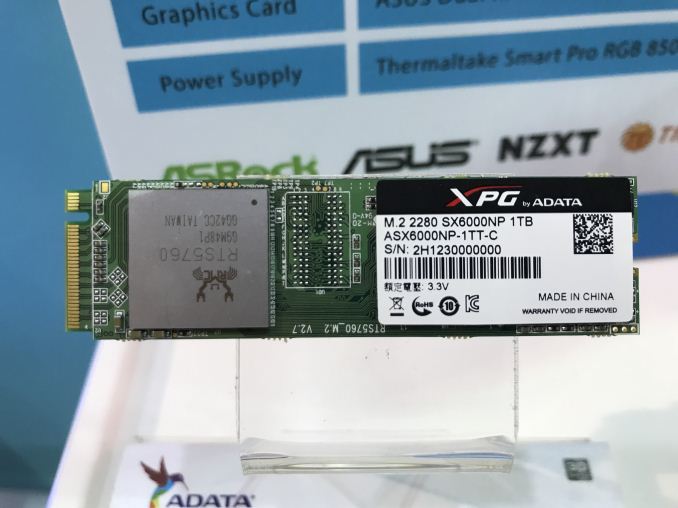

 Quote
Quote

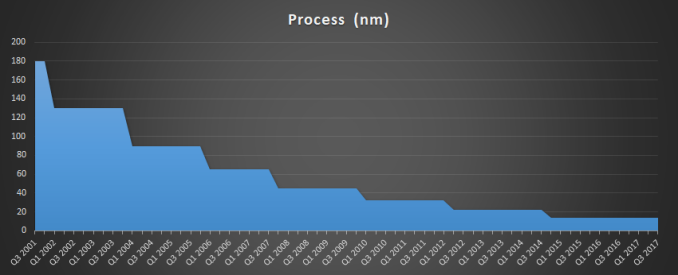
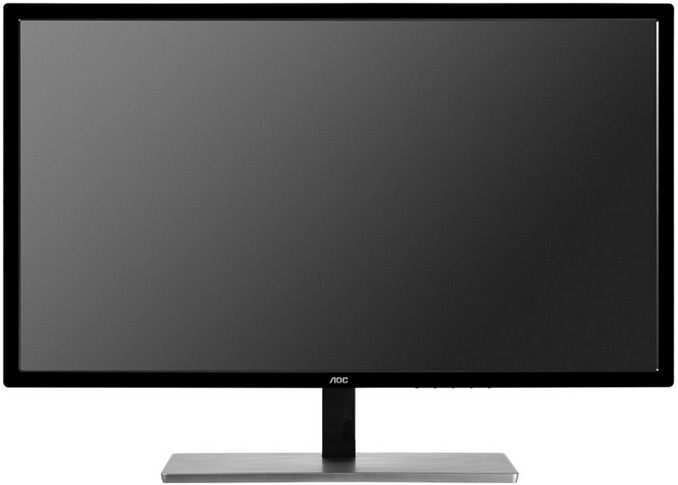
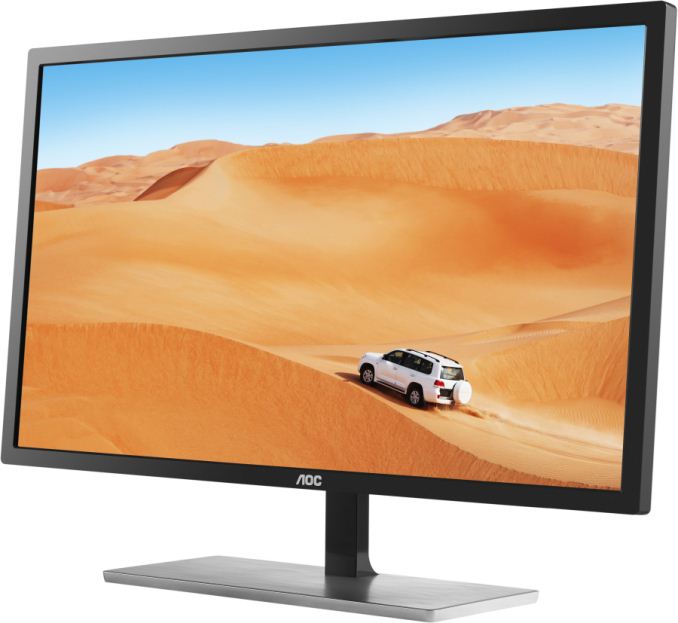
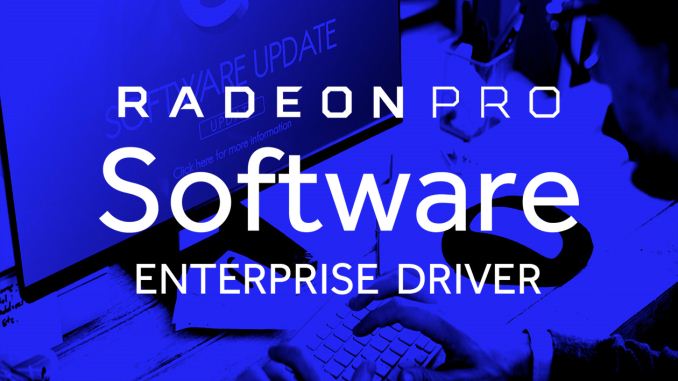

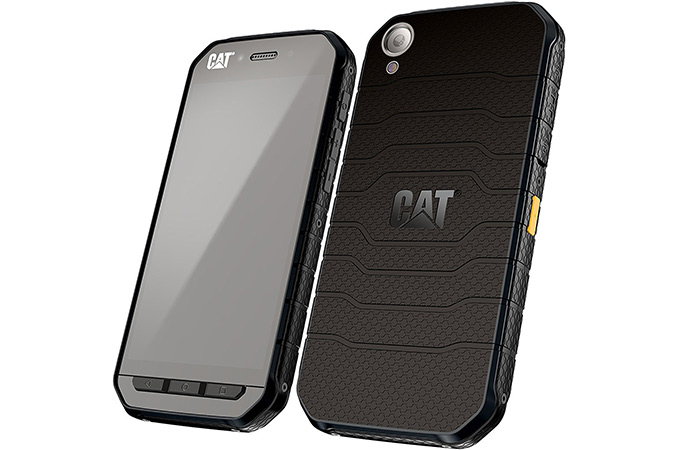
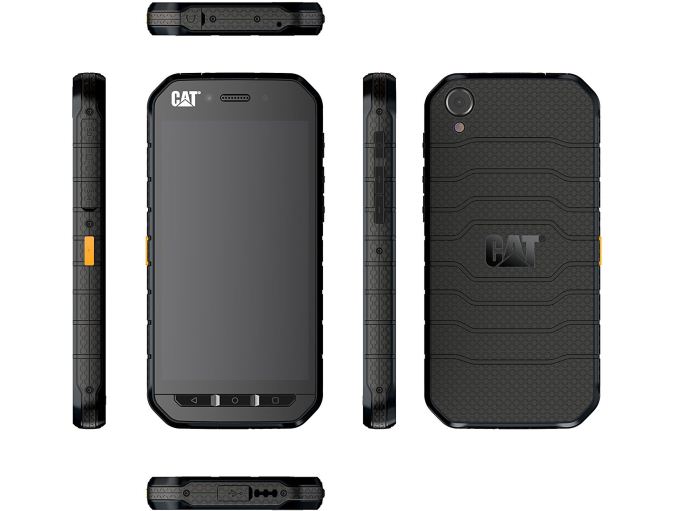



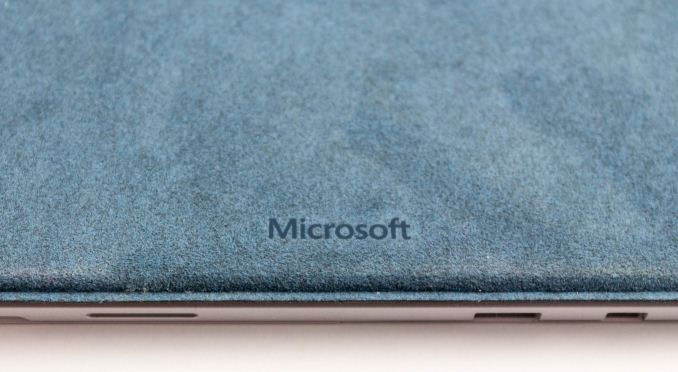
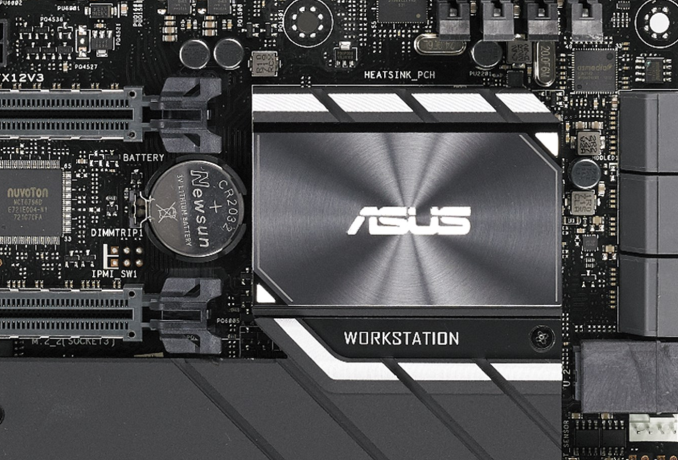
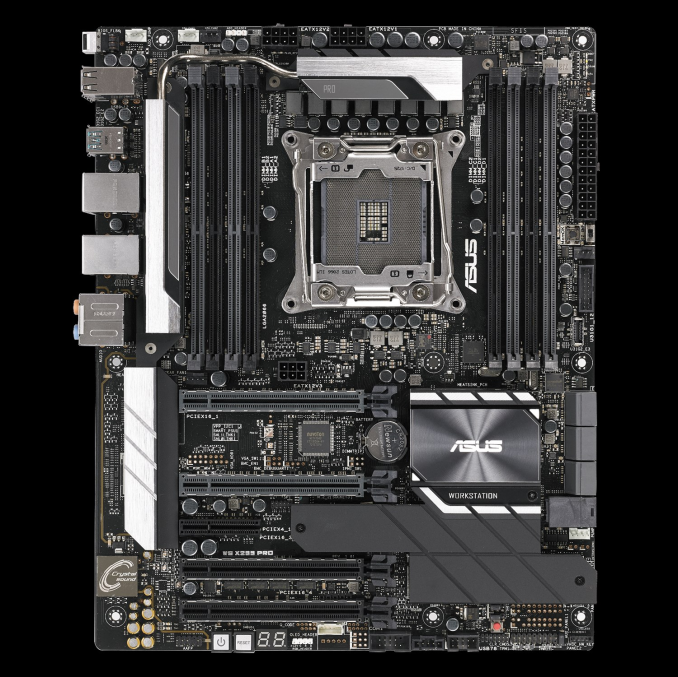
















Bookmarks